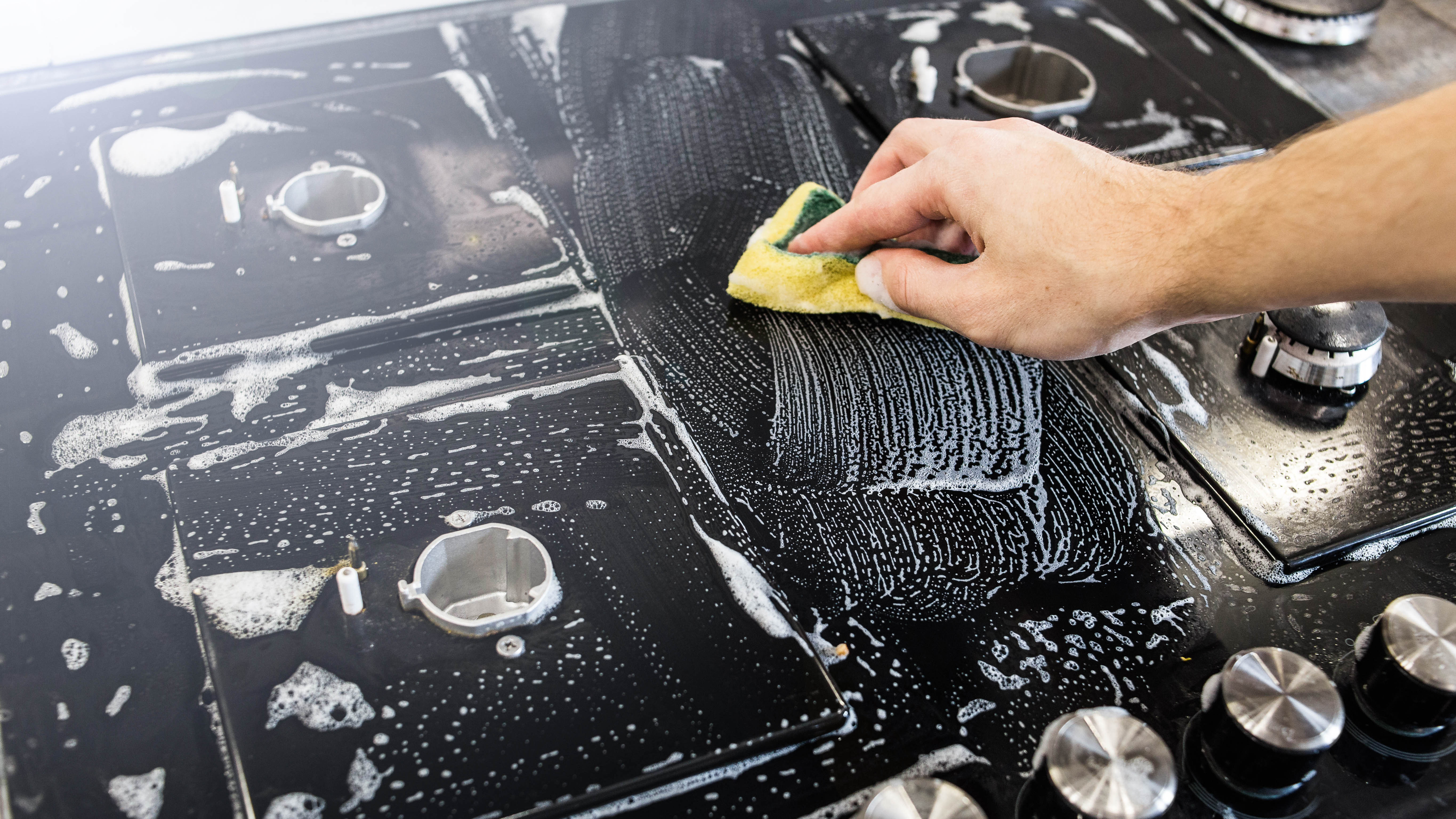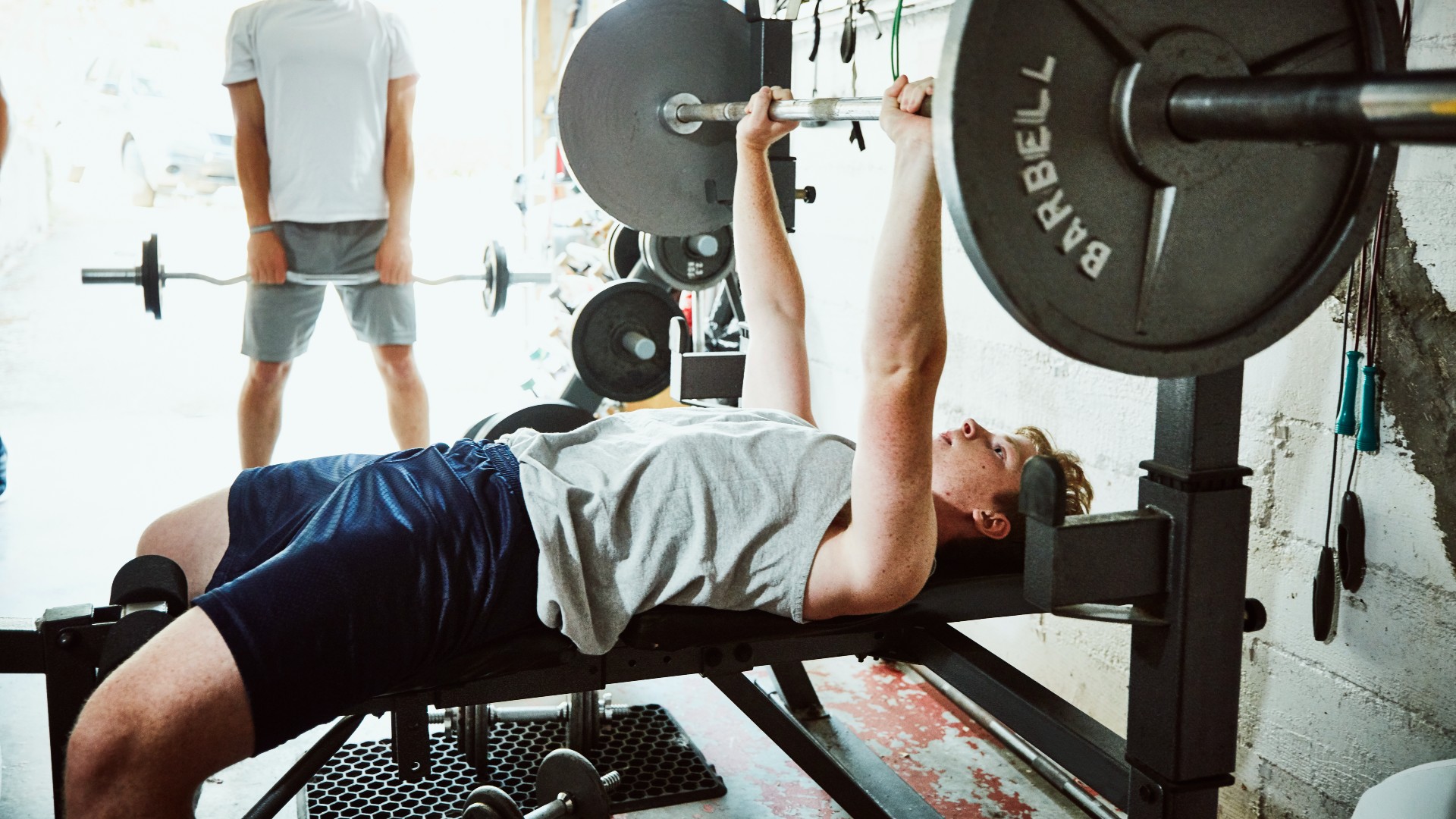
The bench press can be found in just about every gym and home gym, but although it’s one of the most popular exercises for building upper body strength and muscle, there are some bench press form tips to practice to maximize your gains under the bar.
Although there are endless ways to perform a press, the dumbbell bench press and barbell bench press are the two most common methods for mastering this exercise, working your chest muscles, triceps, and fronts of your shoulders. The bench press is considered a functional compound exercise, which means it works multiple muscle groups and joints and improves your ability to push your own body weight.
What’s more, it’s a staple in the best home gym equipment set-ups and easy to measure your progression when included in a regular chest day workout. But bench press form must be learned from the ground up before you hit the bar. Find out why we love the military press and Arnold press as bench press alternatives or read on for our guide on how to bench press with proper form, benefits, muscles worked and variations to try.
How to do a bench press
If you’re unsure whether or not you’re ready to take on the barbell bench press, you need to know you can safely lift the bar. An Olympic bar weighs 20kg (44 pounds), but many gyms house 15kg (33-pound) bars, too. Your bar starts racked over the bench, so you’ll need to be able to lift it through a full range of motion before adding plates.
If you’re new to benching, I suggest learning how to do a push-up using our complete guide, then progress to these bench press variations and a bench press with dumbbells before moving to the bar. It means you can increase weight incrementally at a lower start point but requires more shoulder stability.
When performing push-ups, ensure you can perform a few unbroken sets of 10-15 so that you are confident you can support your body weight. Whether you’re approaching the bench for the first time or you’ve been lifting for years, these tips will help polish your technique.
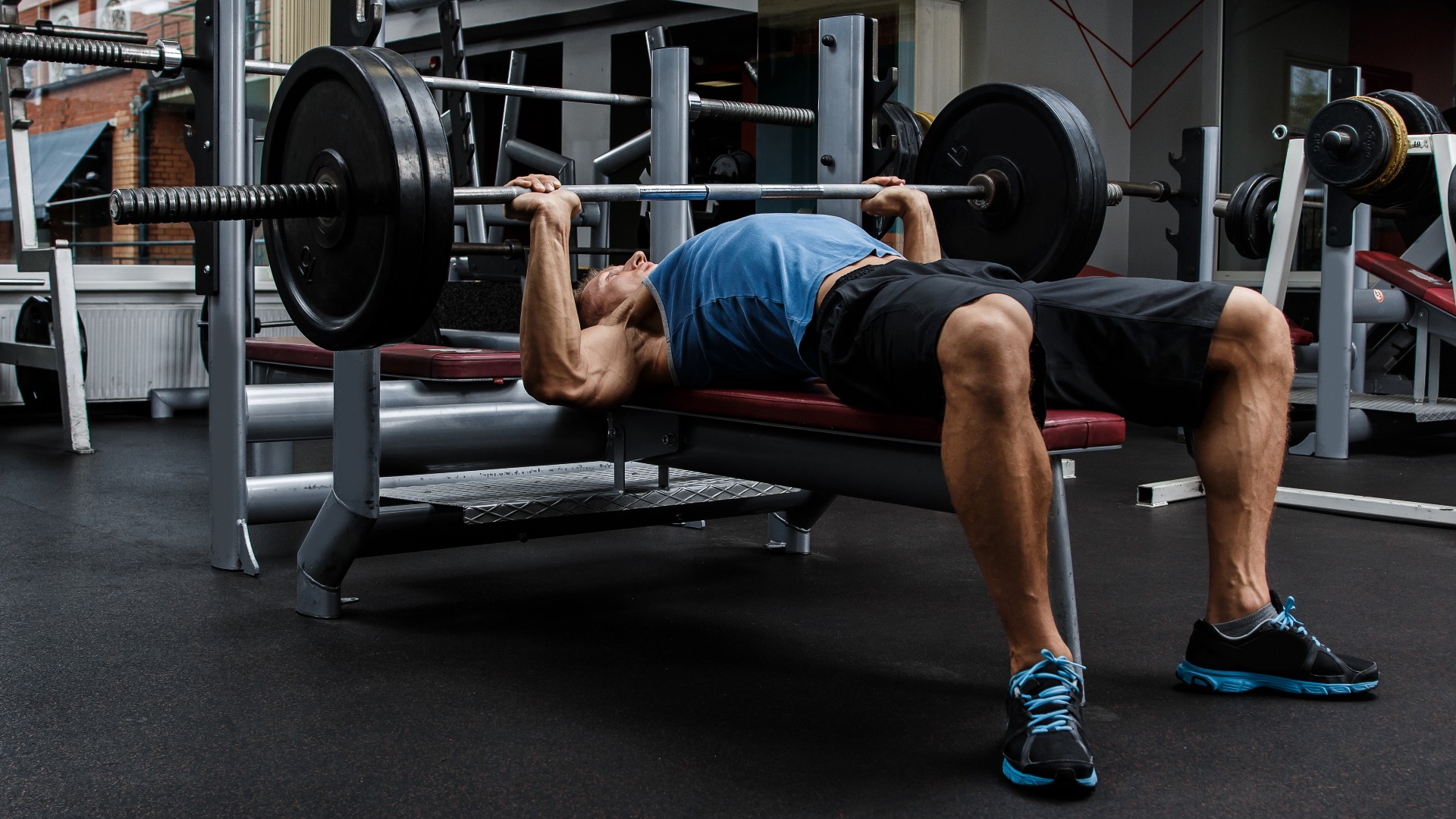
Step-1: Set-up
- Rack your barbell with only a micro bend in your elbows. You don’t want to rack too high, as you’ll have to overreach to unrack and rerack the bar. Too low, and you’ll have to press the bar up before you even start.
- Lay on your bench with your feet flat on the floor and your back and hips supported
- A small mid-upper arch is good, but your core must be engaged, and try to avoid over-flaring your ribs and arching your lower back. Maintain a neutral spine
- Your bar should be at eye level, no further behind than your forehead
- If you have a spotter, they should be standing behind you, ready to catch the bar in case the lift fails.
Step-2: Grip and contraction
- Grip the bar slightly wider than shoulder-width in an overhand grip
- Squeeze your glutes and quads and push the ground with your feet
- Retract your shoulder blades, pushing them back and down; this stabilizes your elbows and shoulders and makes the lift more effective.
Step-3: Eccentric phase (lowering)
- Unrack the barbell and track the bar over your chest, then slowly lower the bar toward your chest with control, allowing elbows to bend to the side under the bar
- Avoid bouncing the bar off your chest at the bottom
- Pause
Step-4: Concentric phase (the lift)
- As you exhale, contract your chest and shoulders and push the barbell with power upwards and lock out your arms at the top.
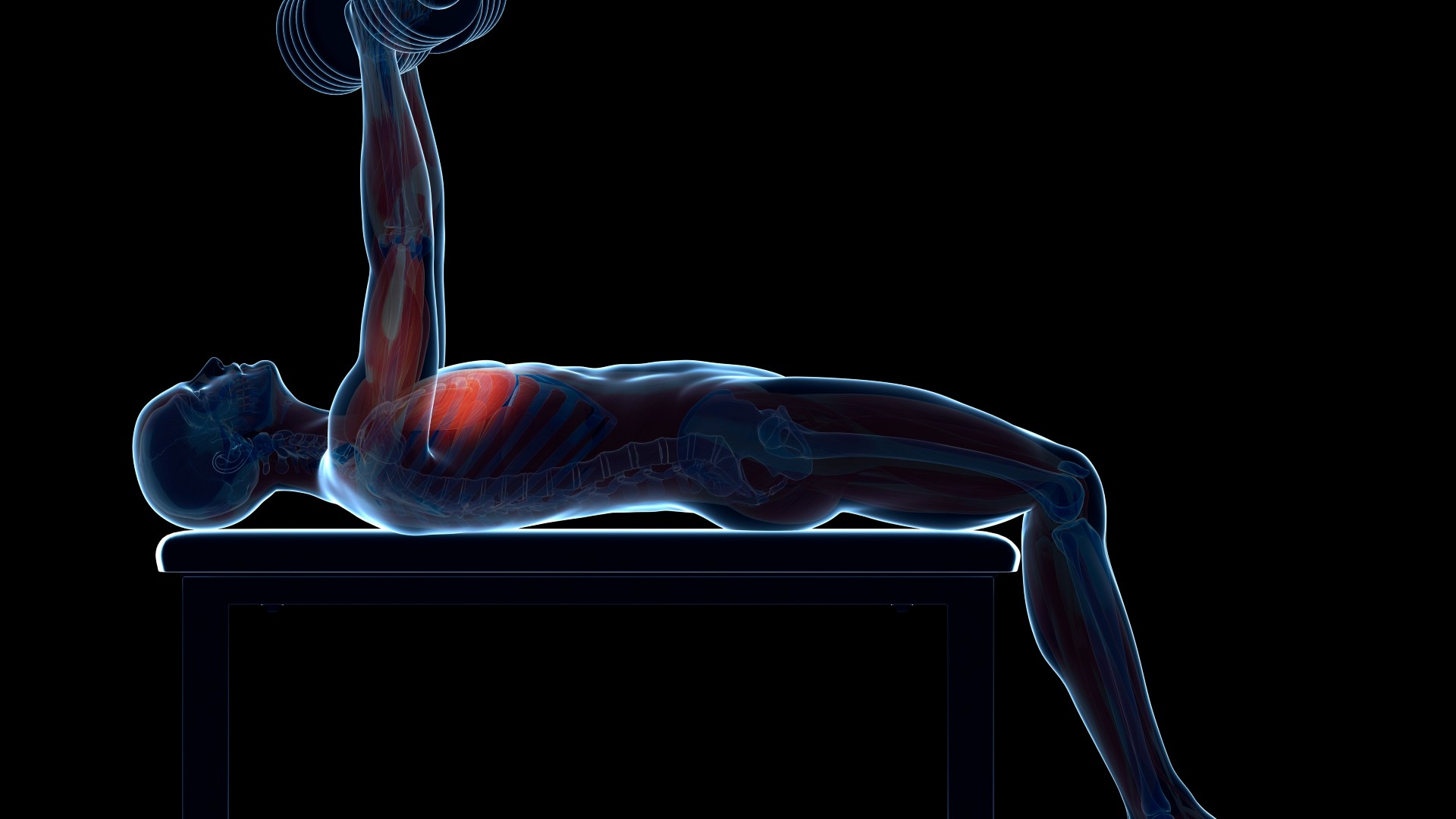
Benefits of bench press and muscles worked
The flat bench press primarily works your pectoralis major, triceps and anterior deltoids (fronts of the shoulders) but also the serratus anterior and biceps brachialis see some action. However, the muscles worked in a bench press will vary depending on the variation.
Sign up to get the BEST of Tom's Guide direct to your inbox.
Get instant access to breaking news, the hottest reviews, great deals and helpful tips.
For example, one study published in the Journal of Sports Sciences assessed the differences between muscle activation during a bench press using dumbbells, barbells, and a smith machine. While activation in the pecs and delts was similar throughout, during the higher stability exercise (dumbbell press), activation was lower in the triceps and higher in the biceps. So if you wondered, ‘do bench presses work biceps?’ the answer is yes.
Therefore, a dumbbell bench press is a reliable backup if there’s high demand in the gym. Regardless, the press builds upper body strength and muscle mass and offers unlimited progressions to ramp up chest day.
Common bench press mistakes
Several mistakes can go undetected but lead to serious injury over time if not corrected early on. The basic movement pattern of the bench press is straightforward, but below are quick fixes to elevate your bench press and maximize your lifting.
Bench press: back arch vs non-arch
It is common to think the back arch is an example of poor form, but it isn’t (within reason). Powerlifters adopt this position to lift heavier and with more power. If your arch occurs in your lower back, that is problematic, but you don’t need to keep your whole back flush with the bench.
Instead, maintain a neutral spine and lower back, engage your core and lift through your mid-upper back. You can also give your shoulder blades a good old squeeze when you arch your back, and people find it easier to contract their muscles.
Bench press: chest bounce
You might have seen keen benchers throwing the bar and bouncing it off their chests. Firstly, ouch. Secondly, it isn’t necessary and will just have you wincing your way out of bed the next day. Equally, lowering the bar to your chest maximizes your range of motion and effectiveness, so try not to fall short, either. A lack of control screams that you’re lifting too much weight.
Bench press: elbow and hand position
Shoulder-width grip is ideal for the bench press as you don’t want to overstress your shoulder or elbow joints. Ensure you fully wrap your thumbs as you want to feel secure on the bar and give it a good squeeze without shifting the weight too far into your fingers. Keep your elbows at 90 degrees unless you adopt a close grip, which will bring your elbows closer to your ribs.
Bench press variations to try
Don’t let your bench press go stale. Use these bench press variations to keep things interesting on your next chest day workout.
Dumbbell bench press
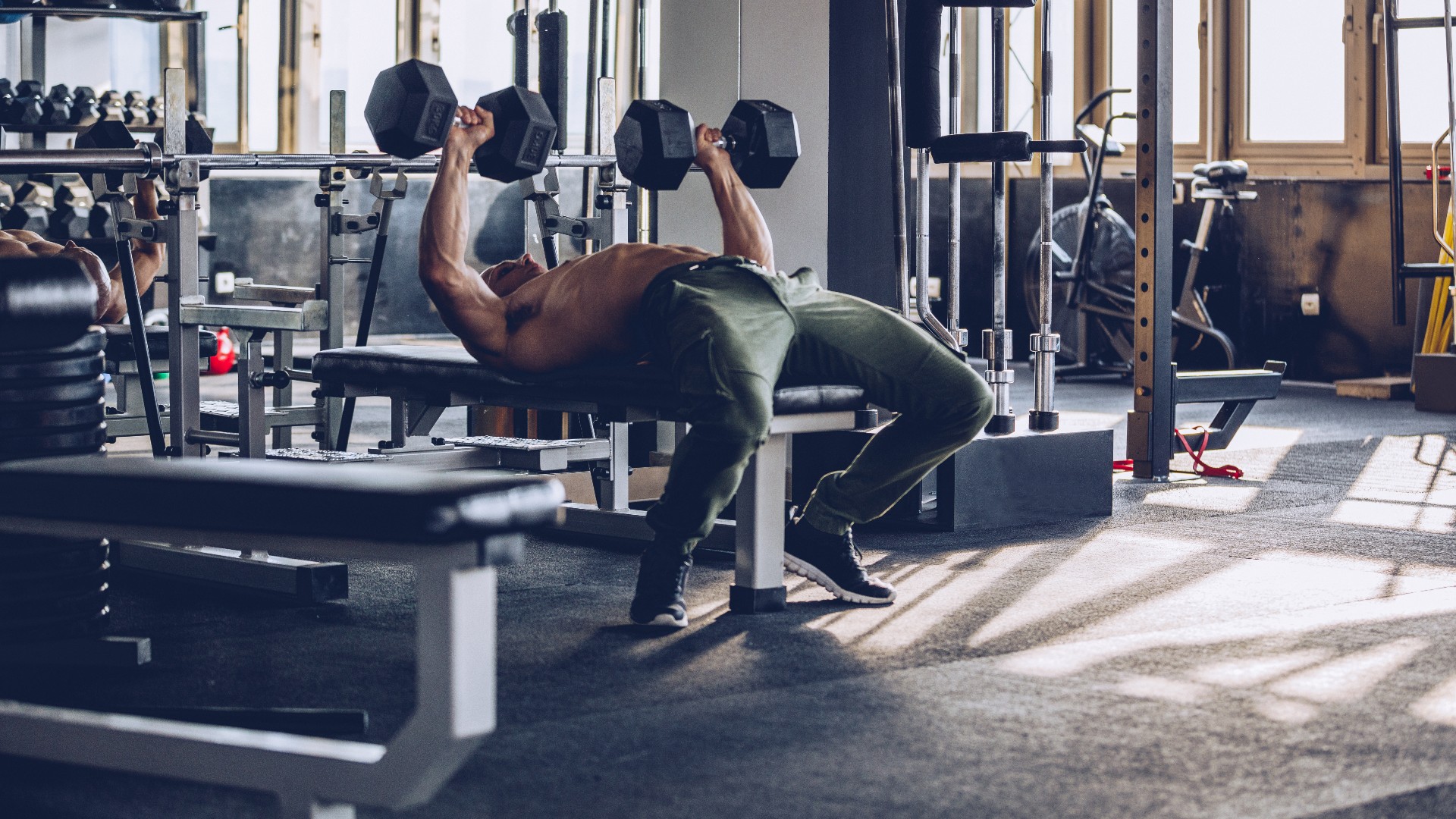
The dumbbell bench press requires more shoulder stability but remains a great alternative for building strength. Because you’re not limited by the bar, you can increase your range of motion and play around with grip and positioning more freely using the best adjustable dumbbells.
A study published in the Journal of Sports Science and Medicine found that while you won’t be able to lift as much weight, the dumbbell bench press can elicit more activation in the biceps and can be used for variation. It can also help develop strength, stabilization and control during shoulder flexion (when your arms are extended).
Narrow grip bench press
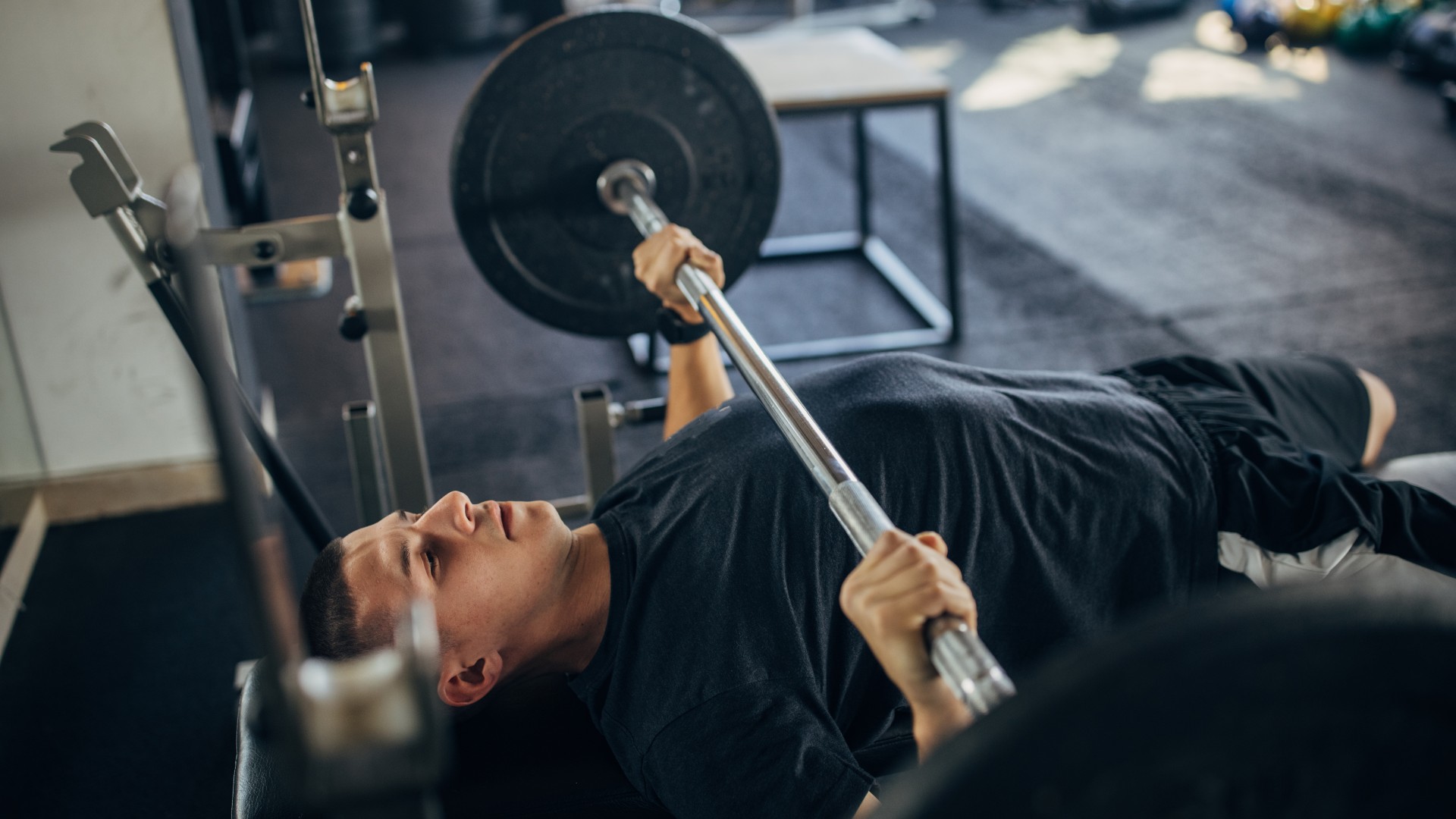
A narrow grip bench press increases activation in the triceps, whereas widening your grip increases bicep and shoulder activation. Research — like this study by the International Journal of Environmental Research and Public Health —has shown that muscle activation elsewhere remains similar. However, if your aim is lifting very heavy, a wider grip will get you there quicker.
Incline bench press
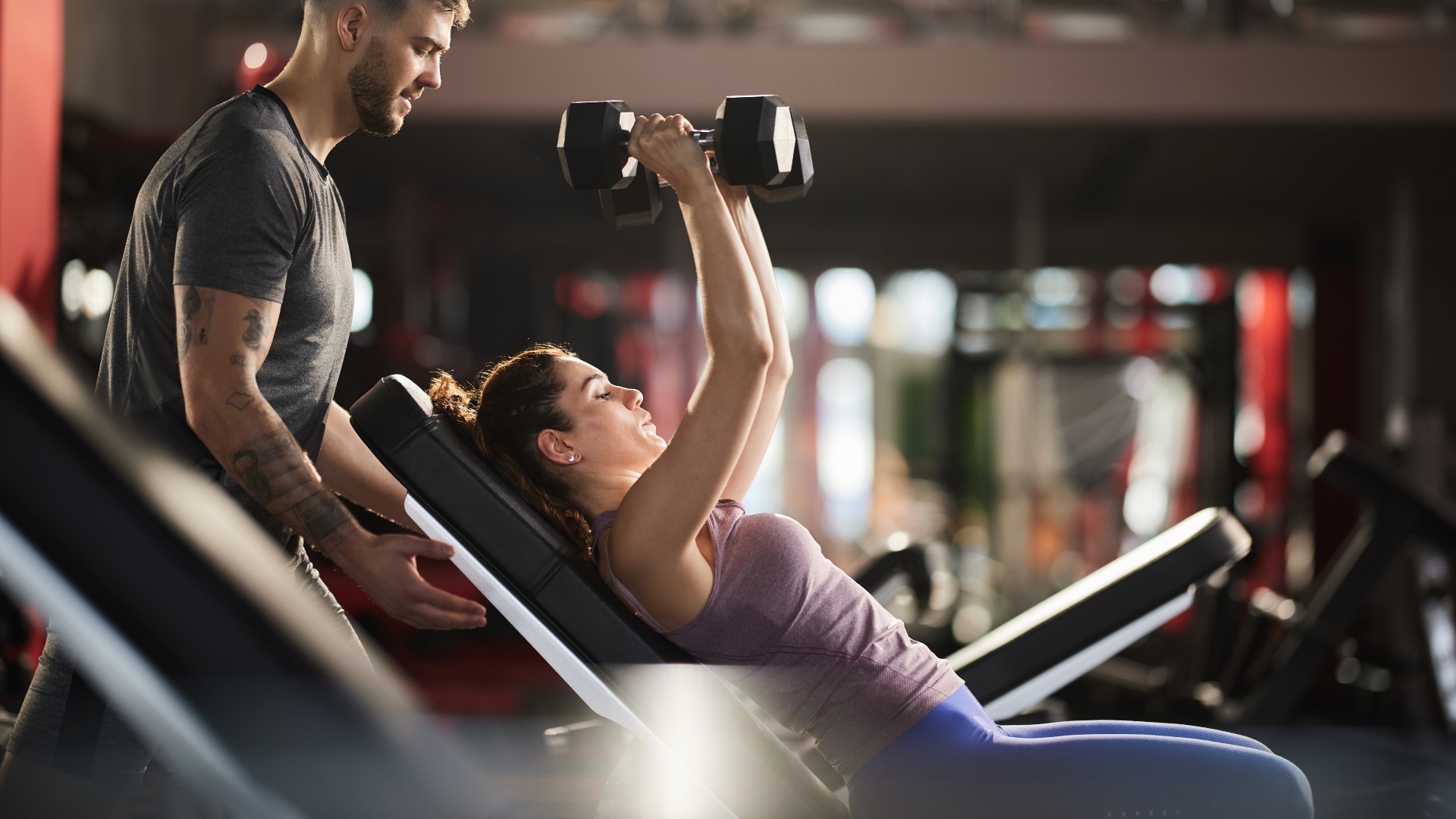
The Incline bench press is a brilliant way to emphasize upper pectoral activation. Research by the European Journal of Sports Science has shown that while upper and lower pec activation occurs during a flat bench press, an incline of 30 degrees produces higher activation of the upper part of your pec. An inclination of 45 degrees or more also produces higher activation of the anterior deltoids but decreases the muscular performance of the pec major.
If you’re looking for a well-rounded chest workout, combining incline and flat bench presses could be your key to success.
Next: I did 50 Arnold presses a day for a week and here's what happened to my shoulders.

Sam Hopes is a level 3 qualified trainer, level 2 reiki practitioner and senior fitness writer at Tom's Guide. She is also currently undertaking her Yoga For Athletes training course. Sam has written for various fitness brands and websites over the years and has experience across brands at Future such as Live Science, Fit&Well, Coach, and T3.
Having worked with fitness studios like F45 and Virgin Active, Sam now primarily teaches outdoor bootcamps, bodyweight, calisthenics and kettlebells. She also coaches mobility and stretching-focused classes several times a week and believes that true strength comes from a holistic approach to training your body.
Sam has completed two mixed doubles Hyrox competitions in London and the Netherlands and finished her first doubles attempt in 1:11.
